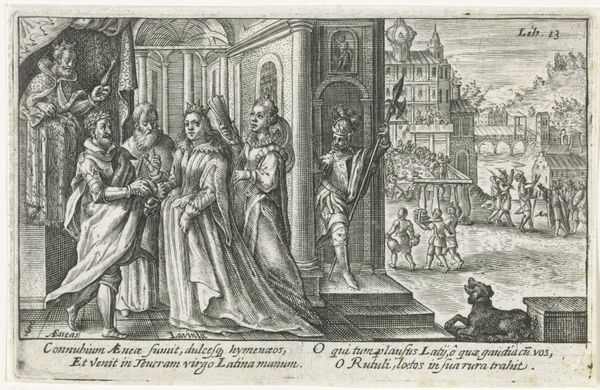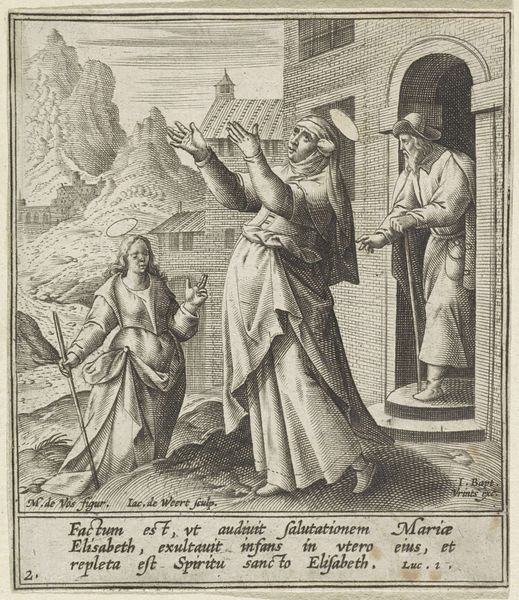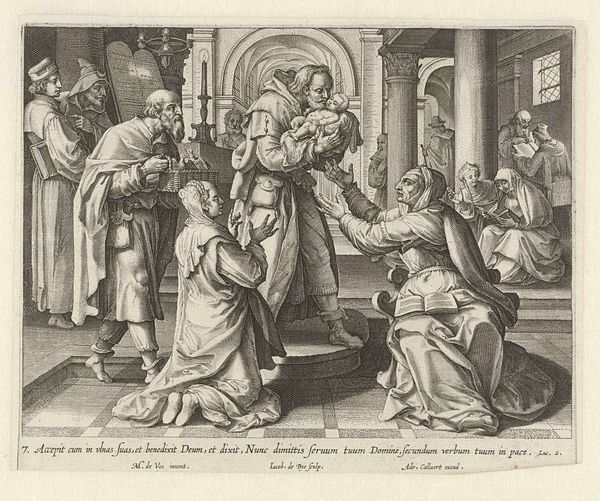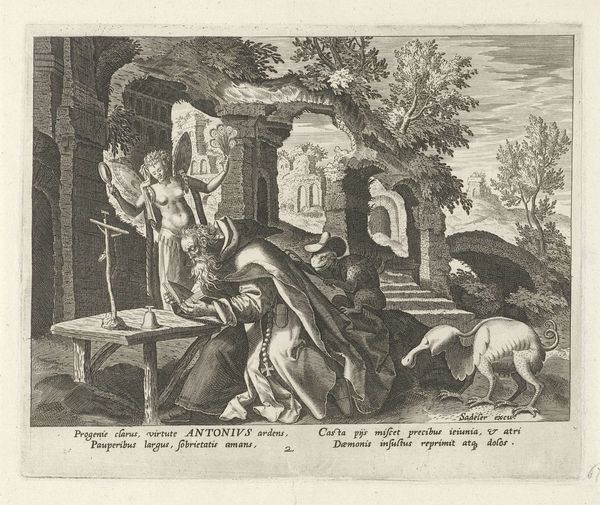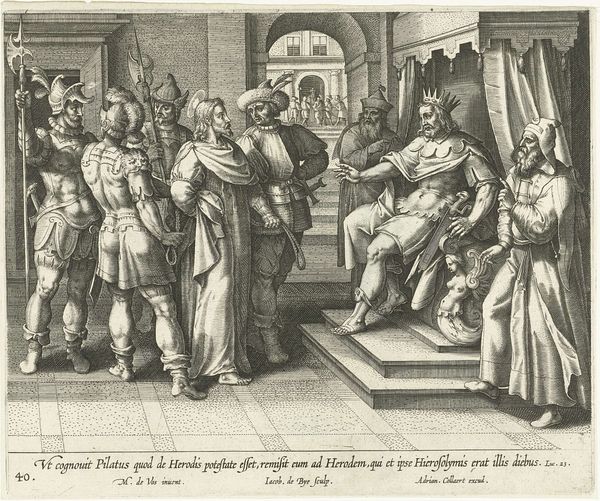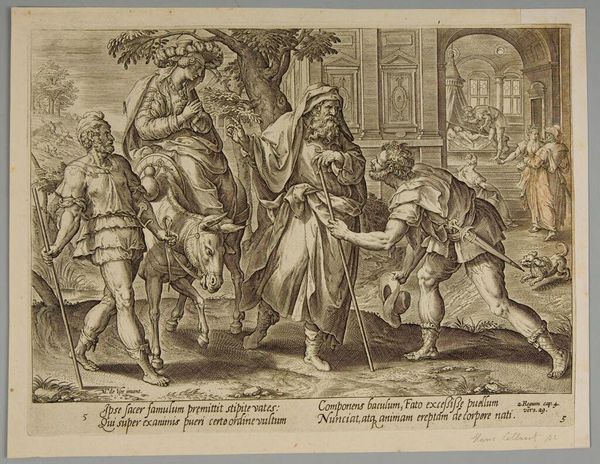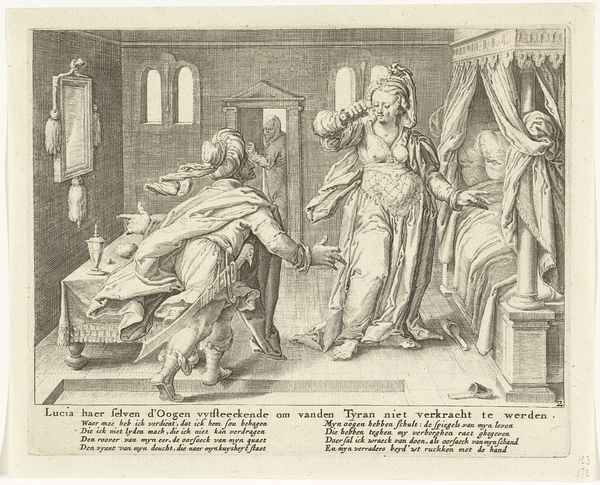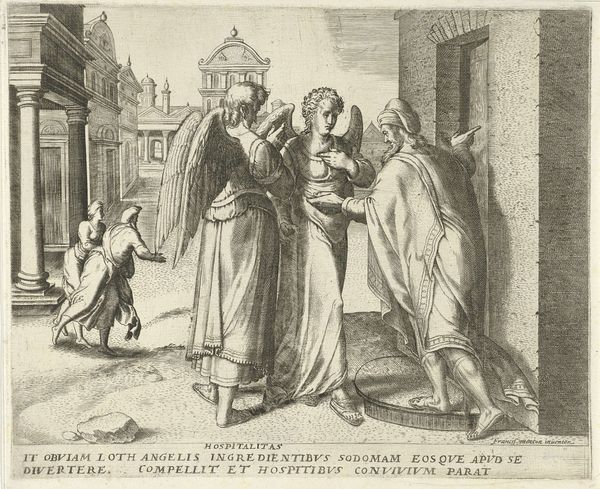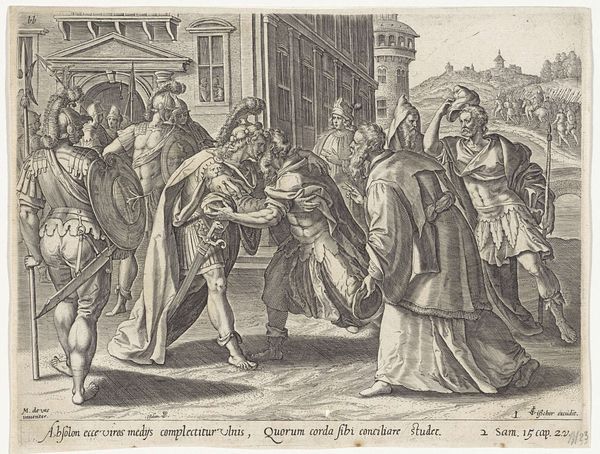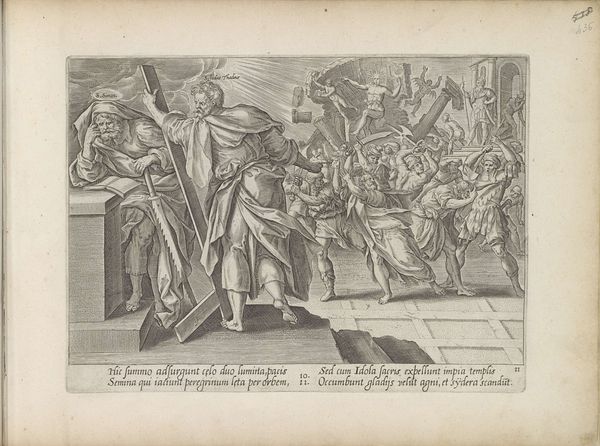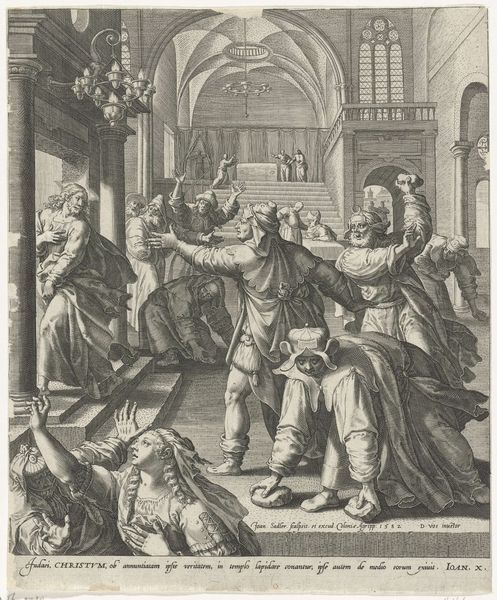
print, etching, engraving
#
narrative-art
#
baroque
# print
#
etching
#
old engraving style
#
figuration
#
line
#
history-painting
#
engraving
Dimensions: height 178 mm, width 215 mm
Copyright: Rijks Museum: Open Domain
Editor: So, this is *Visitatie*, an etching and engraving by Jacques de Bie, dating from the late 16th or early 17th century. It depicts two women greeting each other, and it has this very intricate, almost dreamlike quality. How do you interpret this work, especially considering the time it was made? Curator: This piece gives us an entry point into understanding the intersection of religious narratives and social expectations in the Baroque era. We see here a very specific, staged encounter laden with symbolic weight. Notice how the women's embrace signifies not just kinship, but the confirmation of shared miraculous pregnancies – a moment of female solidarity. Considering this through a feminist lens, we might ask: How does de Bie use the bodies of these women to convey spiritual and political power? Editor: So you're saying their bodies are like vehicles for a larger message? Curator: Precisely. The swelling bellies, almost hidden yet clearly implied, become potent symbols. In the context of early modern Europe, where female bodies were often sites of control and regulation, these images offered a complex narrative of both submission and agency. The male figures recede to the background, their power seemingly diminished in this intimate exchange. What message does that visual choice communicate to us, do you think? Editor: That’s really interesting, because at first glance it just seemed like a straightforward religious scene. Now, I see this subtle commentary on gender roles, this quiet assertion of female power within a patriarchal framework. It makes me think about the restricted roles afforded to women historically. Curator: Exactly! And it’s that tension, that interplay between expectation and subversion, that makes this print so compelling. We can view this "Visitation" not just as a depiction of a biblical story but as a cultural artifact reflecting complex societal norms and emerging feminist perspectives. Editor: That's changed the way I look at art forever! I'm glad I could share this moment of enlightenment with you.
Comments
No comments
Be the first to comment and join the conversation on the ultimate creative platform.
